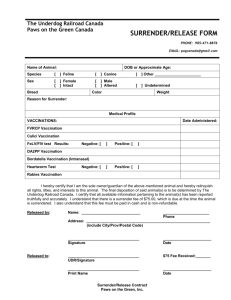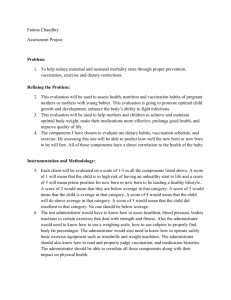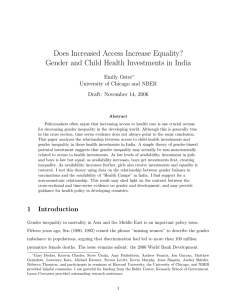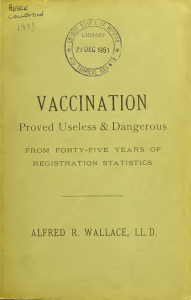From Cradle to Grave: Health, Medicine and Lifecycle in Modern... Lecture 5: Childhood, Illness and Disease
advertisement
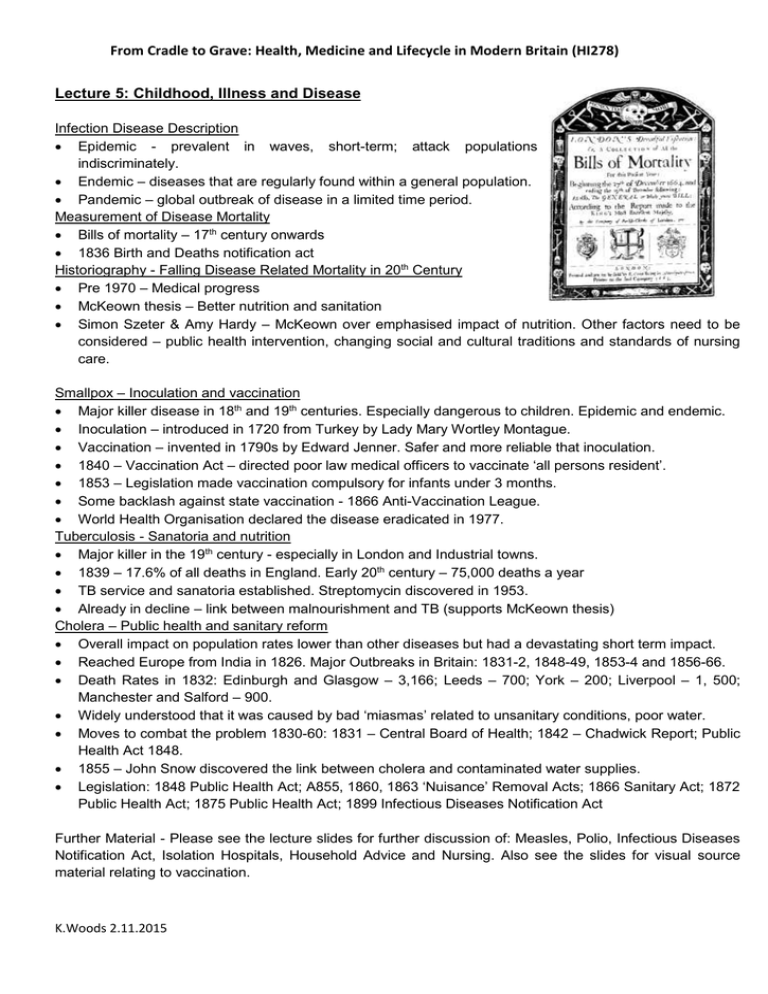
From Cradle to Grave: Health, Medicine and Lifecycle in Modern Britain (HI278) Lecture 5: Childhood, Illness and Disease Infection Disease Description Epidemic - prevalent in waves, short-term; attack populations indiscriminately. Endemic – diseases that are regularly found within a general population. Pandemic – global outbreak of disease in a limited time period. Measurement of Disease Mortality Bills of mortality – 17th century onwards 1836 Birth and Deaths notification act Historiography - Falling Disease Related Mortality in 20th Century Pre 1970 – Medical progress McKeown thesis – Better nutrition and sanitation Simon Szeter & Amy Hardy – McKeown over emphasised impact of nutrition. Other factors need to be considered – public health intervention, changing social and cultural traditions and standards of nursing care. Smallpox – Inoculation and vaccination Major killer disease in 18th and 19th centuries. Especially dangerous to children. Epidemic and endemic. Inoculation – introduced in 1720 from Turkey by Lady Mary Wortley Montague. Vaccination – invented in 1790s by Edward Jenner. Safer and more reliable that inoculation. 1840 – Vaccination Act – directed poor law medical officers to vaccinate ‘all persons resident’. 1853 – Legislation made vaccination compulsory for infants under 3 months. Some backlash against state vaccination - 1866 Anti-Vaccination League. World Health Organisation declared the disease eradicated in 1977. Tuberculosis - Sanatoria and nutrition Major killer in the 19th century - especially in London and Industrial towns. 1839 – 17.6% of all deaths in England. Early 20th century – 75,000 deaths a year TB service and sanatoria established. Streptomycin discovered in 1953. Already in decline – link between malnourishment and TB (supports McKeown thesis) Cholera – Public health and sanitary reform Overall impact on population rates lower than other diseases but had a devastating short term impact. Reached Europe from India in 1826. Major Outbreaks in Britain: 1831-2, 1848-49, 1853-4 and 1856-66. Death Rates in 1832: Edinburgh and Glasgow – 3,166; Leeds – 700; York – 200; Liverpool – 1, 500; Manchester and Salford – 900. Widely understood that it was caused by bad ‘miasmas’ related to unsanitary conditions, poor water. Moves to combat the problem 1830-60: 1831 – Central Board of Health; 1842 – Chadwick Report; Public Health Act 1848. 1855 – John Snow discovered the link between cholera and contaminated water supplies. Legislation: 1848 Public Health Act; A855, 1860, 1863 ‘Nuisance’ Removal Acts; 1866 Sanitary Act; 1872 Public Health Act; 1875 Public Health Act; 1899 Infectious Diseases Notification Act Further Material - Please see the lecture slides for further discussion of: Measles, Polio, Infectious Diseases Notification Act, Isolation Hospitals, Household Advice and Nursing. Also see the slides for visual source material relating to vaccination. K.Woods 2.11.2015



